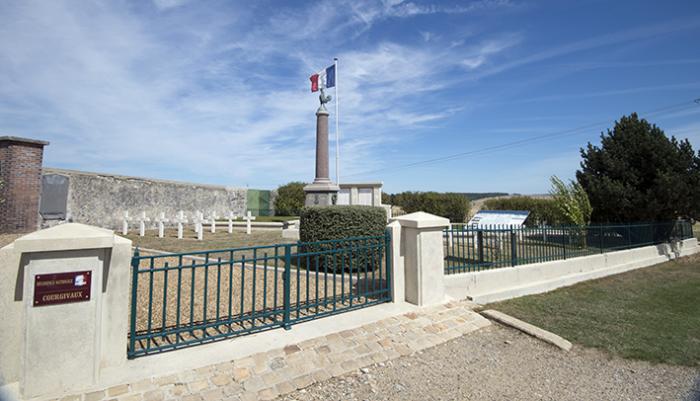
La nécropole nationale de Courgivaux. © ECPAD
Pour accéder au panneau d'information de la nécropole, cliquer ici 
The Courgivaux National Cemetery is home to the bodies of soldiers who died for France in the First Battle of the Marne (September 1914). Created in the aftermath of the fighting, the cemetery was redone in 1921, then in 1929. This cemetery holds a total of 225 French soldiers, with 193 of those in the ossuary. It is located on the very battlegrounds of September 1914.
At the end of the fighting in Courgivaux on 6 and 7 September 1914, civilians were frequently required to bury the dead lying around the village. Over several days, they were buried in mass graves while the officers were buried in individual graves. Collective graves were used until 1915, but the use of individual graves also spread. Furthermore, the law of 29 December 1915 allowed soldiers who died for France to be buried in individual graves. The Courgivaux cemetery is typical of military cemeteries from the beginning of the First World War, and also of the way French military authorities dealt with death.
The remains of Sergeant Gustave Valmont lie in the ossuary. He was a student at the Lycée Condorcet in Paris, and went on to become a philosopher and poet, yet only wrote one volume of poetry, L’Aile de l’Amour (1911). At the time of the French mobilisation of 1914, he abandoned a novel he had begun to write, and joined the 274th Infantry Regiment. On 6 September, he died during a reconnaissance mission.
Sergeant K.H. Harris is also buried there, who was killed on 13 June 1940 at 23 years of age.